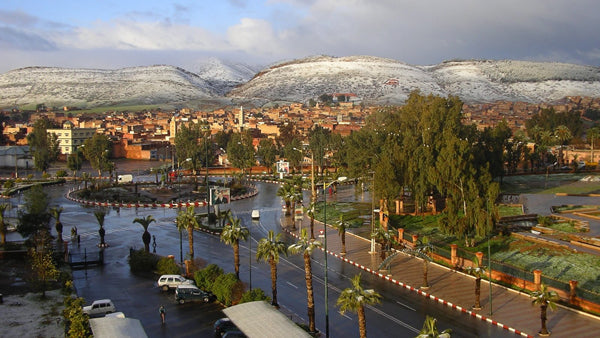About The Tribe


Our Story
How it all started
The Hidden Tribe started as an academic response to a lack of accurate information related to the meaning and categorization of the Berber symbols, rituals, and overall historical development. After years of research and frustration, the founders - who grew up in the Atlas Mountains- decided to kick-start a new approach toward the Berber artisanal community.
Instead of the traditional model of buying carpets, jewelry, garments…etc and reselling them, they decided to study and collect the authentic berber carpets, recreate the old models according to their findings and present it to the experienced weavers on the Atlas mountains in order to correct the discrepancies and populate the database they created for the autochtone symbology.
After two years and a dozen of trips back and forth between the US, France, Spain, and Morocco. The Hidden Tribe Finally has a detailed study with findings and unique knowledge of Berber carpets.
When we met with some of the artisanal community leaders, we were surprised that all of them were men representing a trade that relies 100% on women. Most were more concerned about the bottom line and didn't consider the fact that loosing the authenticity of the message relied by the rug should be also a priority in order to assure the survival of the berber rug.
We decided to go directly to the source, grab our hiking boots destination: The Atlas Mountains.
A berber carpet isn’t considered one if it’s not made according to a tribe’s colors, symbology and techniques. If you open a shop in Marrakech to make an Ait Atta carpet, you just made a fake. Deciding on the authenticity of a carpet and its monetary value should be subject to these criteria and should be held to scrutiny at all stages.
Due to a 1974 law, artisans aren't allowed to export their products, which makes the middleman a necessary vehicle to market the local products abroad. Most middlemen would attend carpet markets, buy by the bulk and transport the products to metropolitan areas such as Marrakech or Agadir where the carpets are exposed in bazars and given arbitrary prices. The weaver will be taking at the most 4% of the final price.
This approach started sometimes during the French colonization, and had its toll on the artisanal trade. Over the years, carpet weavers went from having the freedom to create their own pieces to working on workshops where they are given designs, colors, and dimensions geared toward whatever interior design trend is popular that year. Hence the popularity now of the Ben Ourain carpet, a style very sought after by minimalistic designers. The demand is so high that a lot of middlemen opened workshops in The Ourika Valley exclusively for the making of the Ben Ourain.
After contemplating the disastrous impact of adapting the trade to the market demand, we decided to go the opposite way. Berber carpets are a woman’s mean to tell her own story, if we take that away from her by giving her instruction, popular designs, and putting her on a workshop, we have converted her into another chain worker and we would’ve transformed a live art into a money making factory for the middleman.
At The Hidden Tribe, our long term goal is to bring back to life the old styles and the accurate symbology. In some cases we found out that the young weavers can barely recognize the meaning of 4 to 5 symbols. The old weavers still recognize most of them and can even explain the metamorphosis of some and the introduction of new ones.
Our educational sessions with the Atlas Mountains weavers consist of reeducating the young ones on their own heritage and giving a platform to the old ones to share their traditions so we can bring back the core essence of their artisanal skills. By giving the weavers full control over the gestation and birth of a rug, we intend to restore the story telling into the design of each carpet. The stories today maybe different than the ones told by their ancestors, nevertheless the symbology is known for its consistent adaptability to change of circumstances.